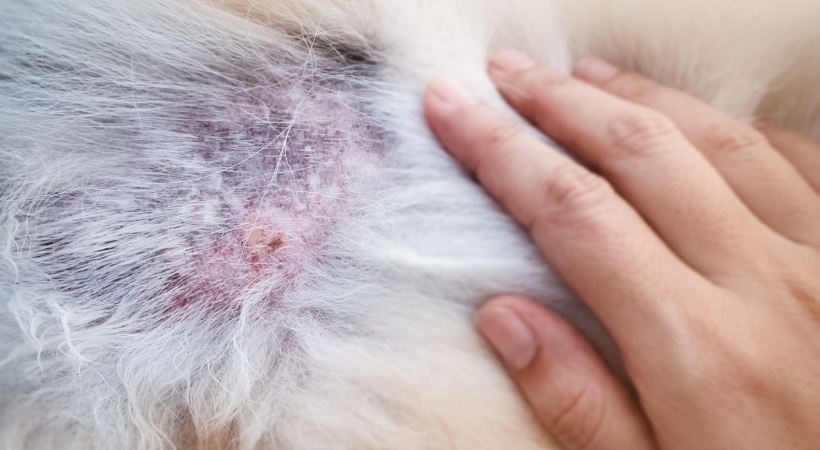Food intolerances in dogs and cats: recognition and management
Is your dog constantly scratching? Does your cat experience frequent digestive upset? These could be signs of food intolerances, a growing concern for many pet owners. Fortunately, food intolerances can be effectively managed with proper care and appropriate nutrition. Early diagnosis is crucial to preventing further health problems.
What are food intolerances in pets?
Food intolerances in dogs and cats refer to adverse reactions to specific food components. Unlike allergies, which trigger an immediate immune system response, intolerances:
- Develop gradually: Intolerances manifest over time.
- Cause delayed reactions: Symptoms don’t appear immediately after ingestion.
- Present symptoms days later: Reactions can occur even several days after the food is consumed.
Recognizing the symptoms of intolerances in dogs and cats
How can you tell if your dog or cat has a food intolerance? The symptoms are varied and can affect different systems. Here are some of the most common signs:
Digestive problems:
The digestive system is often the first to show signs of intolerance. Look for:
- Frequent diarrhea
- Occasional vomiting
- Excessive gas and abdominal bloating
- Changes in appetite (increased or decreased)
- Weight loss or gain
Skin problems:
Skin issues are another key indicator. Symptoms of intolerances in dogs and cats can include:
- Persistent itching
- Skin redness or inflammation
- Excessive shedding, especially outside of normal shedding seasons
- Recurring skin infections: Intense itching often leads to scratching and biting, resulting in lesions that can become infected. In these cases, a veterinarian might prescribe medication to alleviate the itching and prevent further self-trauma.
Note: If your pet’s coat appears dull but your vet has ruled out food intolerances, explore other factors that can affect coat health.
The importance of accurate diagnosis
If you suspect your dog or cat has a food intolerance, it’s essential to consult with a veterinarian. They can conduct a thorough examination, run diagnostic tests to rule out other potential causes, and develop a personalized diagnostic plan.
Managing food intolerances: elimination diets and single-protein foods
Single-protein diets, featuring a single source of animal protein, are often recommended to help identify and manage food intolerances.
However, it’s crucial to understand that single-protein food is not inherently superior to multi-protein food. A balanced diet with high-quality animal proteins from various sources can provide pets with a broader range of essential nutrients and cater to their taste preferences.
Furthermore, intolerances are not limited to proteins; animals can be intolerant to other food components as well. While there aren’t truly “hypoallergenic” foods that work for all cats, there are foods that can be hypoallergenic for your cat, by excluding the specific ingredients they react to. Your veterinarian can help you identify these trigger ingredients.
Why choose a single-protein diet (when appropriate)?
Single-protein diets are beneficial in specific cases of suspected intolerance because they:
- Facilitate ingredient identification: Makes it easier to pinpoint the culprit ingredient.
- Reduce the risk of new sensitivities: Limits exposure to potential allergens.
- Simplify feeding management: Provides a controlled diet during the elimination trial.
- Improve digestion: Can be easier on the digestive system during the diagnostic phase.
After completing the elimination trial, consider rotating different single-protein foods from various sources to avoid potential nutritional deficiencies. Alternatively, a well-formulated multi-protein food that excludes the identified triggers can be a good long-term solution.
Practical management of food intolerances
What should you feed a dog or cat with a food intolerance? The answer depends on the stage of management:
- Elimination Trial Phase (approx. 60 days): During this period, follow the veterinarian’s recommended diet strictly. Only feed the chosen single-protein kibble, wet food, or homemade recipe, avoiding all other treats and foods.
- Maintenance Phase: Once the trigger ingredient has been identified, maintain a balanced diet that excludes it. This might involve continuing with a single-protein food or transitioning to a multi-protein food formulated without the offending ingredient.
- Transition Period: When changing your pet’s diet, do so gradually over 7-10 days. Slowly mix the new food with the old, increasing the proportion of the new food each day. A sudden change can cause digestive upset.
Regardless of the diet, patience and consistency are key. Avoid feeding table scraps, potentially dangerous or toxic foods.
Natural, quality solutions: treatment and prevention
When seeking natural remedies for food intolerances in cats or the best single-protein food for dogs, consider Naxos Pet Food. Naxos believes that all animals deserve food that is close to their natural diet.
We use exclusively Italian-made, short-chain raw materials. Among these are also superfoods — such as citrus fruits, pomegranates, and spirulina algae — that support the digestive system and immune system.
All our products are free of soy and gluten, artificial preservatives, and colorants.
Naxos Petfood for cats with intolerances
If your feline friend has intolerances, Naxos offers solutions for every stage of life, also addressing hydration needs. Always remember that cats need a diet mostly consisting of wet food.
Naxos wet food for intolerant cats is available in multiple formats:
- Single-protein kitten mousse with blue fish (94% mackerel), enriched with pomegranate, spirulina algae, and salmon oil.
- Single-protein pork paté for sterilized cats, with 94% pork (lung, liver, and heart), pomegranate, spirulina algae, and salmon oil.
- Single-protein tuna paté for sterilized cats, with 94% tuna, pomegranate, spirulina algae, and salmon oil.
The assortment of Naxos dry food for intolerant cats consists of:
- Kitten blue fish and pomegranate, a formula designed for the growth of kittens from 2 to 12 months of age and enriched with pomegranate, spirulina algae, fish oil, yucca schidigera, rosemary, flax seeds, citrus fruits, carob, prickly pear.
- Sterilight blue fish and pomegranate, with added prickly pear, peas, oats, flax seeds, citrus fruits, carob, chicory pulp, and yucca schidigera.
- Sterilight pork and prickly pear, with spirulina algae, olive oil, citrus fruits, yucca schidigera, carob. A formula that guarantees over 33% high-biological-value crude protein for all sterilized cats.
Naxos Petfood for intolerant dogs
Are you looking for the best single-protein kibble for your dog? Here are five options, for different sizes (maxi, medium, mini) and life stages (puppy, adult, mature, sterilight):
- Naxos dog adult medium blue fish and citrus fruits, with Sicilian lemons and oranges for antioxidant action, flax seeds to support the nervous system, and prickly pear to aid digestion. Also available in formats adapted for mini and maxi sizes, as well as for sterilized dogs and puppies.
- Naxos dog lamb and citrus fruits, with natural antioxidants, spirulina algae to strengthen the immune system, and prickly pear for its soothing and protective effect on the gastrointestinal mucous membranes.
- Naxos dog pork and pomegranate, with prickly pear and olive oil to promote coat wellness.
- Naxos sterilight pork and citrus fruits, with spirulina algae that supports the immune system and gut microbiota, prickly pear, and carob.
- Naxos buffalo and prickly pear, with pomegranate and olive oil, rich in vitamin E.
Discover where to find the most suitable food for your pet, online or near your home. Check out our blog for more useful tips for their well-being.


